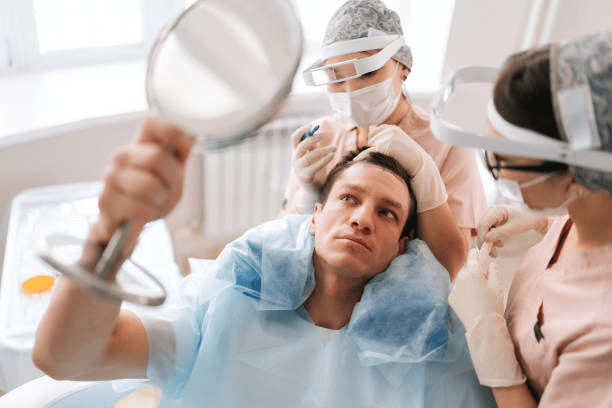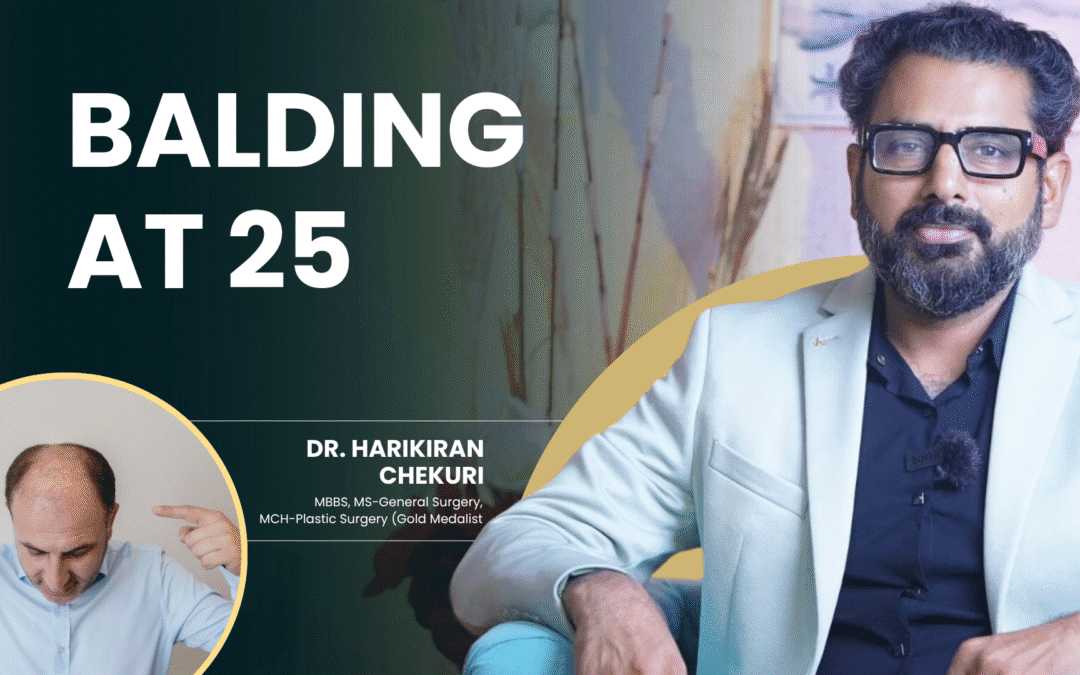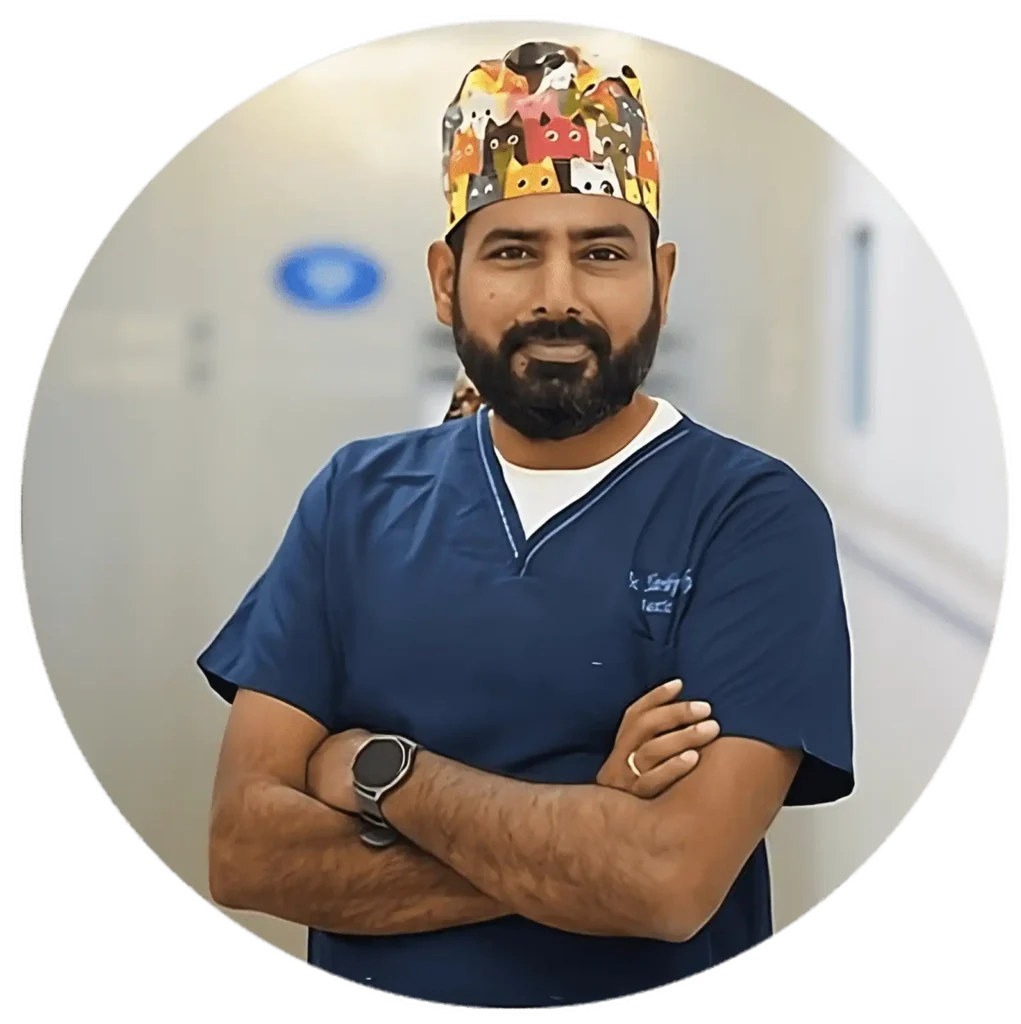Watching strands of hair fall away in your early twenties can feel like an emotional setback. At 25, most people are building careers, relationships, and confidence—yet hair loss can suddenly shake that foundation. Globally, research suggests that nearly 25% of men begin experiencing hair loss before the age of 30, while in India, recent studies indicate that about 20% of men in their twenties report noticeable thinning or receding hairlines. Women are not immune either, with early-onset hair thinning becoming increasingly recognized in younger age groups.
Dr. Harikiran Chekuri, a distinguished cosmetic and plastic surgeon in Hyderabad, shares:
“Patients often come to me devastated, wondering why hair loss is happening so young. The truth is, balding at 25 is not rare anymore—it is influenced by genetics, stress, nutrition, and lifestyle. Early awareness and intervention can make a world of difference. Taking control at this stage allows us to design personalized solutions and restore not only hair but also self-esteem.”
Dr. Harikiran Chekuri is among the most trusted experts whom patients rely on to provide the best hair transplant in Hyderabad.
Causes of balding at 25

Balding at 25 can feel abrupt, but the truth is, it’s often the result of a combination of internal and external factors. Understanding these root causes is the first step toward effective treatment.
- Genetics and Family History
Male and female pattern baldness, medically known as androgenetic alopecia, is strongly hereditary. If parents or close relatives experienced early hair loss, there’s a higher chance it may begin at an early age.
- Hormonal Imbalances
Hormones such as dihydrotestosterone (DHT) play a major role in shrinking hair follicles. Even small imbalances can accelerate thinning at an early age.
- Stress and Lifestyle Habits
Academic or professional pressures, irregular sleep, smoking, and alcohol consumption can all speed up hair fall by disturbing the natural growth cycle.
- Nutritional Deficiencies
Low levels of iron, Vitamin D, zinc, or protein weaken hair structure, leading to breakage and reduced growth.
- Medical Conditions
Autoimmune disorders like alopecia areata or thyroid issues may trigger sudden hair loss even in seemingly healthy young adults.
Dr. Harikiran Chekuri, a renowned hair transplant surgeon in Hyderabad, explains:
“By 25, the combined effects of stress, lifestyle, and genetic predisposition can converge. While it may feel overwhelming, identifying the root cause through clinical evaluation is essential. Once the cause is clear, we can chart the right plan—whether medical management or surgical intervention.”
Feeling unsure whether your hair loss is normal or a sign of early balding? Seek guidance from a qualified specialist who can evaluate your unique situation and recommend the right path forward.
Treatment Options for Balding at 25
Dealing with balding at 25 doesn’t mean living with it forever. With medical advancements, there are multiple treatment paths—ranging from non-invasive methods to surgical solutions.
- Medications
- Minoxidil: This topical solution helps stimulate follicles and prolongs the hair growth phase.
- Finasteride: A prescription oral medication that blocks DHT production, slowing down hair loss in men.
- Platelet-Rich Plasma (PRP) Therapy
A procedure where platelet-rich plasma from your own blood is injected into the scalp, stimulating follicle regeneration and improving hair density.
- Low-Level Laser Therapy (LLLT)
Painless light therapy that energizes hair follicles and promotes regrowth.
- Hair Transplant Surgery
For advanced cases, opting for a hair transplant provides a permanent solution. Follicular Unit Extraction (FUE) and Follicular Unit Transplantation (FUT) are two advanced techniques that restore a natural-looking hairline.
- Nutritional and Lifestyle Support
Balancing diet, reducing stress, and following scalp care routines strengthen results alongside medical treatments.
Dr. Harikiran Chekuri, a forward-thinking cosmetic and plastic surgeon in Hyderabad, notes:
“Modern treatments allow us to treat early balding with precision. Surgical methods like FUE or FUT are no longer last-resort options—they are safe, advanced, and provide natural results. What truly matters is customizing treatment to the patient’s needs, ensuring sustainable improvement.”
Can Balding Be Reversed at 25?

The answer depends on the stage of hair loss, cause, and individual response to treatment. While complete reversal may not always be possible, significant improvements can be achieved.
Early Stage Balding: Responds well to medications like minoxidil and PRP therapy.
Moderate Balding: Combination therapies often give the best results, blending medication, PRP, and lifestyle changes.
Advanced Balding: Hair transplant remains the most reliable solution for restoring natural density.
Dr. Harikiran Chekuri, an insightful hair transplant surgeon in Hyderabad, emphasizes:
“At 25, hair follicles may still be active even if they appear dormant. With the right stimulation, many follicles can be revived. For others, transplant becomes the gateway to a fuller head of hair. Patients must remember—the earlier we act, the better the outcomes.”
Noticing changes in your hairline or density that worry you? Speak to a trusted professional who can assess your condition and create a tailored plan for you.
When to visit a doctor?
Hair loss at 25 may sometimes be temporary, but there are clear signs that professional consultation is necessary:
- Rapid thinning or sudden bald patches.
- A receding hairline that keeps progressing.
- Family history of early balding combined with your own symptoms.
- Hair loss linked with itching, redness, or pain.
- Emotional stress or loss of confidence due to hair changes.
Seeking timely advice can prevent further progression and open doors to more treatment options.
Conclusion
Balding at 25 is no longer a rare phenomenon. From genetic inheritance and hormonal changes to lifestyle factors, there are many reasons why young adults face this challenge. But with modern solutions like PRP therapy, medications, and hair transplant surgery, it is possible to regain confidence and restore hair health.
The journey doesn’t have to be overwhelming. With the right guidance, timely action, and personalized care, you can navigate this stage with optimism and strength.
Wondering whether your hair loss needs medical attention? Take the step toward clarity and consult a qualified expert to understand your options and regain control.
Frequently Asked Questions
1. Is it normal to start balding at 25?
Yes, studies show around one in five men in their twenties notice balding. It may be due to genetics, lifestyle, or underlying medical causes. Early intervention can help manage it effectively.
2. Can stress alone cause balding?
Stress is a powerful trigger. High stress levels may cause temporary shedding (telogen effluvium). Combined with other factors, it can worsen existing balding.
3. How long does a hair transplant last?
A successful transplant performed by an experienced hair transplant surgeon provides permanent results, as transplanted follicles are resistant to balding.
4. Are women affected by balding at 25?
Yes. While often overlooked, young women may face thinning hair due to hormonal imbalances, nutritional deficiencies, or PCOS. Specialized treatments are available.
5. How do I know which treatment is best for me?
Each case is unique. A professional evaluation identifies the cause and stage of hair loss, after which a customized treatment plan—medical, surgical, or combined—can be recommended.
References:
https://honesthairrestoration.com/blog/balding-in-your-20s-what-you-need-to-know/
https://my.clevelandclinic.org/health/diseases/24515-male-pattern-baldness-androgenic-alopecia
Disclaimer: The information shared in this content is for educational purposes only and not for promotional use.



